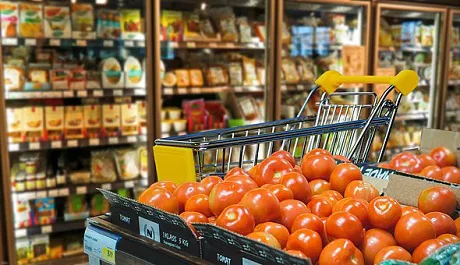 The annual Fresh Connections conference, the Produce Marketing Association’s Southern African gathering, was yesterday opened in its virtual format by Cathy Burns, the organisation’s CEO.
The annual Fresh Connections conference, the Produce Marketing Association’s Southern African gathering, was yesterday opened in its virtual format by Cathy Burns, the organisation’s CEO.
She noted the great tailwinds experienced by the fresh produce industry at the moment, due to the pandemic.
She delineated how well that dovetails with an increasing desire among consumers and employees to give expression to their values and desire for sustainability.
“Compassion is a strong recipe for success in difficult times and the fresh produce industry is actually on the leading edge of an era where what you stand for, will directly influence someone’s desire to work for you or do business with you.”
“We should be highlighting how the fresh produce and floral industries make a positive contribution to the world. Purpose is the new strategy, embedding meaning into every aspect of work.”
As always, her presentation was rich in examples of innovative practices and the results of global research.
Paying farmers to bury carbon
It is estimated, she said, that US$700 billion in regenerative agricultural investment could return as much as US$10 trillion while mitigating nearly 170 gigatonnes of CO2 emissions over the next thirty years.
“Indigo Agriculture’s Terraton Initiative pays American farmers US$15 to US$20 for every tonne of carbon they sequester. They say these payments could potentially double the salaries of struggling farmers.”
In some US citrus orchards fungi introduced to the soil were assisting in offsetting the equivalent of a passenger car’s emissions per acre.
Consumer mindfulness = marketing sweet spotHowever, she pointed out, while regenerative, precision and organic agriculture are closely tied to the future of agriculture and food security (especially in Southern Africa where the World Wildlife Fund estimates 50% more food will have to be produced by 2050) consumers’ priorities might be focused elsewhere.
“We have to share these stories about sustainability with consumers. Our challenge is that this doesn’t always align with what consumers are interested in: they are interested in packaging, zero waste and energy. Consumers are seeking brands that align with their values.”
For the fresh produce industry, this growing mindfulness represents a marketing sweet spot of growing consumer demand for products that are healthy for themselves and healthy for the world.
Three megatrends are influencing the fresh produce industry: rapid urbanisation, an ageing population and accelerated migration.
After the decimation of the food service industry and the two biggest retail shopping weeks ever in March, she said, fresh produce has continued to enjoy elevated sales levels although, after four or five months of cooking at home, there were now signs of culinary burnout among the American population.
Google searches for berries jump by 200%
“If there is one positive from this pandemic, it’s a renewed interest in health and wellness. A healthy lifestyle is becoming a social currency. I believe we have huge opportunity in this space.”
Google searches for berries jumped by 200% over the past twelve months, as a reflection of this.
She referred to Tufts University research that postulated that doctor's prescriptions for fruit and vegetables could save the US $100 billion in healthcare costs.
“The single most important thing a person can do to live a vibrant and fulfilling life, is to consume more fruit and vegetables. Our challenge is to make ensure the rest of the world not only knows this, but does this.”
Fresh produce marketing should go beyond the health angle
“These are great tailwinds for our industry - consumers are actively looking for us and our products, but how are we connecting with them? We need to compel people to think about produce differently, more often and beyond its medicinal qualities alone.”
She told delegates that the industry needed to make deeper connections on an emotional level with consumers. The industry should work to dispel the old chestnut that healthy food and delicious food are two separate categories.

The PMA’s Beyond Health report gives insight into the emotional drivers behind fresh produce consumption.
“The more we can show how fresh produce meets their needs across more eating occasions, the stronger our sales and relevance will be. We have a once in a lifetime opportunity to positively impact the health of millions of global consumers.”
